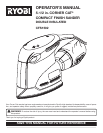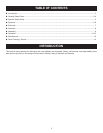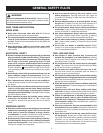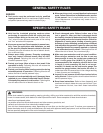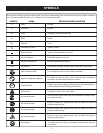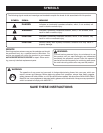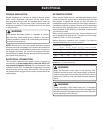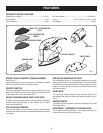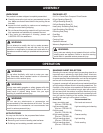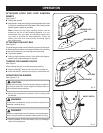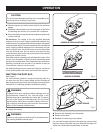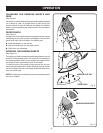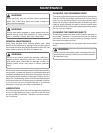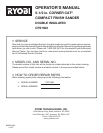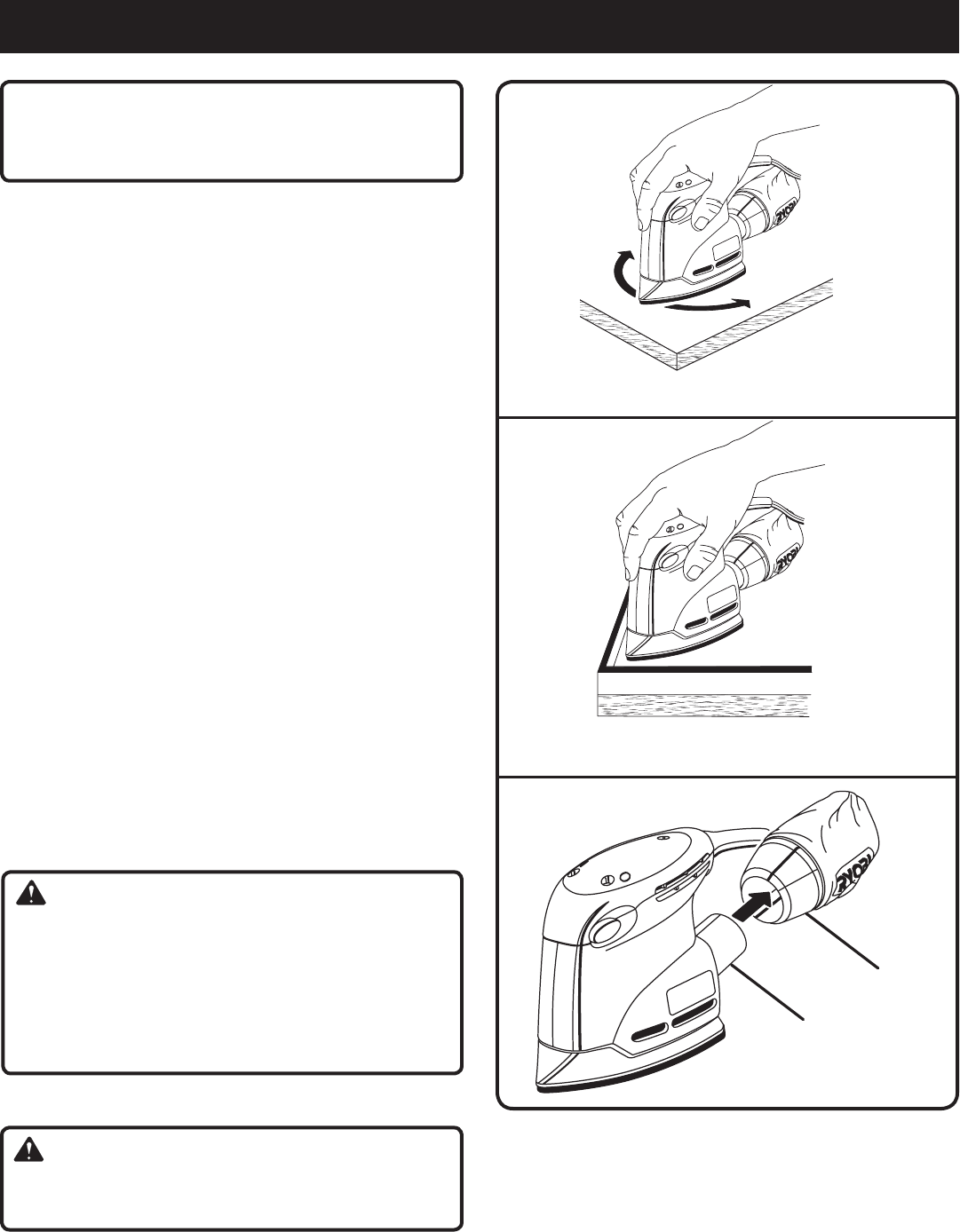
11
OPERATION
CAUTION:
To avoid motor damage resulting from overheating, do
not cover the air vents with your hand.
n Start the sander and let the motor build to its maximum
speed.
n �Gradually lower sander onto the workpiece so that all of
the sanding disc surface is in contact with workpiece.
n Move the sander slowly across the workpiece using small,
circular motions.
Do not force. The weight of the unit supplies adequate
pressure to do the work. Applying additional pressure only
slows the motor, rapidly wears the sanding sheet, and greatly
reduces sander speed. Excessive pressure will overload the
motor causing possible damage from overheating and can
result in inferior work. Any finish or resin on wood may soften
from the frictional heat. Do not sand on one spot too long
as the sander’s rapid action may remove too much material,
making the surface uneven.
Extended periods of sanding may overheat the motor. If this
occurs, turn the sander off and wait until the sanding sheet
comes to a complete stop. Remove sander from workpiece.
Remove your hand from vent area. Turn sander on and run
it free without a load to cool the motor.
For detail sanding such as corners and crevices, use the tip
of the sanding sheet with small, back and forth motions.
EMPTYING THE DUST BAG
See Figure 7.
For more efficient operation, empty the dust bag when it is
no more than half full to permit better air flow through the
bag. Always empty and clean the dust bag thoroughly upon
completion of a sanding operation and before storing.
n Unplug the sander.
�
n Remove the dust bag from the sander.
�n Shake out the dust.
�n Reattach the dust bag to the sander.
For a more thorough cleaning of the dust bag, remove dust
bag from frame and shake out dust. Replace dust bag over
frame then install dust bag assembly on sander.
WARNING:
Failure to unplug the tool could result in accidental start-
ing causing possible serious injury.
WARNING:
Collected dust from sanding surface coatings such as
polyurethanes, linseed oil, etc. can self-ignite in the
sander dust bag or elsewhere and cause fire. To reduce
the risk of fire, empty the dust bag every 10-15 minutes
while sanding. Never store or leave a sander without to-
tally emptying its dust bag. Also follow the recommend-
ations of the coatings manufacturers.
Fig. 5
Fig. 7
Fig. 6
DUST BAG
BLOWER EXHAUST
SANDING IN CIRCULAR MOTIONS
SANDING IN CORNERS



